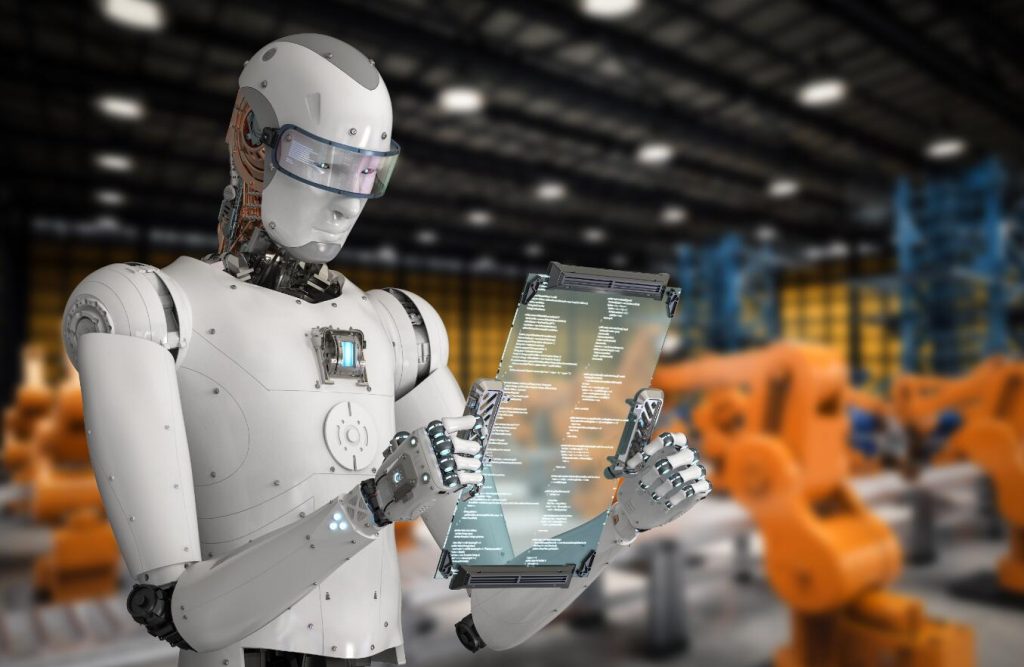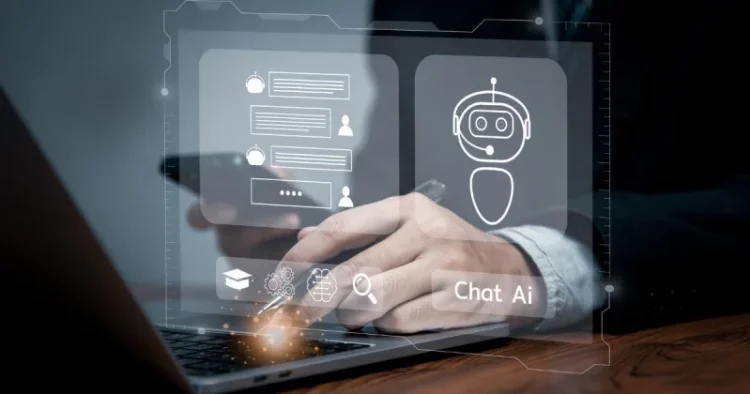Introduction: The Future of Work in the Age of Automation and AI
The global labor market is undergoing one of the most significant transformations in modern history. Over the past few decades, rapid advances in automation, robotics, and artificial intelligence (AI) have already begun reshaping industries, economies, and the nature of work itself. While the potential benefits of these technological innovations are well-recognized—such as increased productivity, cost reduction, and the creation of new industries—the long-term impacts on workers, job markets, and global economies are still uncertain.
In this article, we will explore the unexpected effects that automation and AI could have on the global labor market. From job displacement and new job creation to shifts in skill demand and changes in workplace dynamics, we will examine how these technologies are likely to reshape the way people work, the types of jobs available, and the broader socioeconomic implications.
Chapter 1: The Rise of Automation and Artificial Intelligence in the Workforce
1.1 Automation: A Game-Changer for Industries
Automation involves the use of machines, systems, or software to perform tasks that were traditionally carried out by humans. Over the past century, automation has already had a profound impact on industries like manufacturing, transportation, and agriculture, reducing the need for manual labor and significantly increasing production efficiency.
Recent advancements in robotics, machine learning, and artificial intelligence have further accelerated this trend. Today, automation extends beyond factory floors to areas such as customer service, finance, retail, and healthcare. Machines can now handle complex tasks like diagnosing diseases, processing financial transactions, and interacting with customers via chatbots.
1.2 Artificial Intelligence: The Next Frontier of Automation
Artificial intelligence (AI), particularly machine learning (ML) and deep learning (DL), enables machines to learn from data and perform tasks that require human-like intelligence. While traditional automation involves following predefined instructions, AI systems can adapt to new information and make decisions based on complex patterns.
For example, in sectors like finance, AI-powered algorithms are already optimizing trading strategies, detecting fraud, and managing investments. In manufacturing, AI is used to predict machine failures, optimize supply chains, and manage quality control. AI’s growing capabilities mean that tasks once thought to be uniquely human—like decision-making, problem-solving, and creative thinking—are increasingly being automated.
Chapter 2: Unexpected Impacts on the Global Labor Market
While the technological revolution offers numerous advantages, it also presents a number of challenges and unexpected impacts on workers and labor markets around the world. Some of these effects are already being felt, while others will likely emerge in the coming decades.
2.1 Job Displacement: A Double-Edged Sword
One of the most obvious concerns about automation and AI is the potential for massive job displacement. As machines become more capable, many routine, repetitive tasks traditionally performed by humans will be replaced. For instance:
- Manufacturing: Robots and automated production lines have already displaced millions of factory jobs around the world, and this trend will continue as technology advances.
- Retail: Self-checkout machines, online shopping algorithms, and cashier-less stores (like Amazon Go) have already begun replacing retail workers.
- Transportation: The rise of autonomous vehicles threatens to displace millions of jobs in trucking, delivery services, and public transportation.
The automation of lower-skilled jobs in sectors like customer service, food production, and data entry could leave millions of workers without employment opportunities. A report from the World Economic Forum estimated that by 2025, 85 million jobs could be displaced by automation.
2.2 New Job Creation: Evolving Roles and Industries
While automation and AI are expected to lead to job losses in some sectors, they will also create new job opportunities in other areas. As old jobs disappear, new industries, roles, and functions are emerging. Some of the key areas where job creation is likely to occur include:
- AI and Robotics Development: As demand for AI and robotic systems grows, there will be a surge in jobs related to AI programming, data science, and robotic engineering.
- Green Energy and Sustainability: The shift toward renewable energy and sustainable technologies will create jobs in industries like solar energy, wind power, and electric vehicle manufacturing.
- Healthcare: Advances in telemedicine, genomics, and personalized medicine will lead to new healthcare roles, from data analysts to bioinformatics specialists.
- Creative and Strategic Roles: Many human-centric roles in fields like marketing, design, and leadership will become more valuable as AI handles more routine tasks. Jobs requiring empathy, creativity, and strategic thinking will still be in high demand.
However, the creation of these new jobs will likely require workers to develop new skills—a trend that may exacerbate the skills gap and create a polarized job market.
2.3 The Skills Gap: Adapting to a Changing Job Market
As AI and automation disrupt traditional industries, there will be an increasing demand for workers with advanced skills in areas such as data science, AI programming, cybersecurity, and robotics. Unfortunately, many workers in traditional sectors may not have the training or qualifications necessary to transition to these new roles.
This skills gap poses a significant challenge for governments, companies, and educational institutions. Workers in sectors like manufacturing, transport, and retail—where jobs are most at risk—will need to upskill or reskill in order to remain competitive in the labor market. Additionally, workers in more complex and high-skilled jobs will need to adapt to AI-driven tools and collaborate with machines rather than competing with them.
To bridge this gap, there will be a growing need for education reform, including a focus on STEM education (science, technology, engineering, and mathematics), lifelong learning, and reskilling initiatives. Governments and businesses will play a critical role in investing in workforce development to ensure that displaced workers can transition into new roles.
2.4 Economic Inequality: The Rich-Poor Divide
While automation and AI have the potential to increase global productivity and economic output, they also pose significant risks for economic inequality. The benefits of these technologies are unlikely to be evenly distributed across society, leading to a widening wealth gap between those who can capitalize on new technologies and those who are left behind.
- High-skilled workers in tech and AI-related fields will benefit from the rise of automation, with high-paying job opportunities and increased productivity.
- Low-skilled workers, especially in industries like retail, hospitality, and transportation, are at greater risk of job displacement and wage stagnation.
Moreover, developing countries that rely on manual labor in agriculture or manufacturing may face even greater challenges as global supply chains become increasingly automated. Without the necessary infrastructure and investment in education and training, these nations may struggle to adapt to the new economic realities.
The rise of AI-powered automation could thus exacerbate global economic inequality, with some regions and workers reaping the rewards of technological advancement, while others face the threat of unemployment and economic marginalization.
2.5 Psychological and Societal Impact: Shifting Attitudes Toward Work
The widespread adoption of automation and AI could also have a profound psychological and societal impact on the way people view work. As more routine tasks are automated, many workers may feel a loss of purpose or alienation. Work has long been a central part of people’s identities, and the loss of traditional jobs may lead to feelings of insecurity, anxiety, and social unrest.
In contrast, some workers may find freedom and flexibility in the shift toward remote work, freelancing, and gig economy jobs, as technology enables more flexible work arrangements. AI and automation could give rise to self-employment opportunities or entrepreneurial ventures, allowing individuals to create their own jobs.
Nevertheless, the long-term impact of these changes will largely depend on how societies choose to handle the transformation. Governments, businesses, and workers will need to navigate these shifts carefully to ensure that social cohesion is maintained and that the psychological impact of these changes is minimized.

Chapter 3: How Can We Prepare for the Future of Work?
The transformation of the labor market due to automation and AI is inevitable. However, the future of work is not set in stone—it can be shaped by proactive strategies and thoughtful planning. Key areas to focus on include:
3.1 Reskilling and Education
Investing in education and reskilling programs will be essential in ensuring that workers can transition smoothly into new roles. Public and private institutions must provide training for the digital economy, ensuring that workers can develop the technical and cognitive skills required to thrive in an AI-driven world.
3.2 Social Safety Nets and Support Systems
As automation displaces workers in traditional sectors, governments may need to enhance social safety nets, such as universal basic income (UBI), job guarantee programs, and unemployment benefits. These systems can provide a cushion for those affected by job losses and offer the time and resources to reskill and transition to new employment opportunities.
3.3 Ethical AI and Automation
As automation and AI become integral to business operations, companies will need to prioritize ethical practices to ensure that their AI systems do not reinforce biases or exacerbate inequalities. The development of transparent, inclusive, and responsible AI technologies will be key to ensuring that these innovations benefit all segments of society.
Conclusion: The Road Ahead for Work and Technology
The future of work in the age of automation and AI is full of possibilities, but it also presents significant challenges. While automation has the potential to increase productivity, lower costs, and create new opportunities, its disruptive impact on the labor market cannot be ignored. Job displacement, the skills gap, economic inequality, and psychological well-being will all need to be addressed if we are to ensure a fair and sustainable transition to the future of work.
As we move forward, it is crucial that policymakers, businesses, and workers themselves are prepared for the changes that AI and automation will bring. By investing in education, reskilling, and responsible AI development, we can build a labor market that embraces technology while ensuring that no one is left behind. The key to navigating the future of work will be ensuring that technology serves humanity—not the other way around.


















































